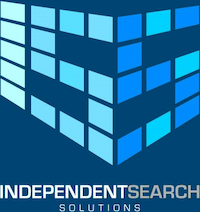How to Address CV Gaps During a Job Interview
Job interviews can be daunting, and for those with gaps in their CV, the challenge can feel even more intimidating. While employment gaps can raise questions, they are not uncommon, and handling them with honesty and confidence can turn potential concerns into opportunities to demonstrate resilience and adaptability. Here’s a guide on how to effectively address CV gaps during a job interview.
- Acknowledge the Gap Honestly
The most important step in addressing a CV gap is to be upfront about it. Recruiters and hiring managers are likely to notice gaps in your work history, so trying to hide or gloss over them can hurt your credibility. Instead, acknowledge the gap early in the conversation, without apologizing for it. Frame it as a fact and focus on how you used that time productively.
Example: “Yes, I took a six-month break from formal employment, but during that time, I focused on upskilling myself by taking online courses in project management and honing my technical skills.”
- Explain the Reason Professionally
Be prepared to explain the reason for your employment gap. Whether it was due to personal reasons, job market challenges, travel, caregiving responsibilities, or pursuing further education, it’s important to provide a clear and concise explanation. However, always maintain a professional tone and avoid delving into overly personal or sensitive details.
Examples:
- “I took time off to care for a family member, and during that period, I developed my time management and organizational skills, which will be beneficial in this role.”
- “I went back to school to complete my certification in digital marketing, which is why there’s a gap in my employment.”
- Highlight What You Did During the Gap
Turn the gap into an opportunity to showcase personal growth, new skills, or experiences gained. Employers appreciate candidates who use time off to develop themselves, even if it was outside of traditional work.
- Further Education: Mention any courses, certifications, or degrees you pursued during the gap.
- Freelance or Consulting Work: If you worked on short-term projects or freelanced, include this experience.
- Volunteering: Highlight any volunteer work, community involvement, or non-profit contributions.
- Personal Projects: Share any passion projects, travel, or creative endeavors that helped you grow personally or professionally.
By framing the gap as a period of active growth and learning, you demonstrate to potential employers that you stayed proactive.
Example: “During my gap, I worked as a freelance designer and completed several projects for local businesses. This experience helped me hone my design and communication skills, which are directly applicable to this role.”
- Show Confidence in Your Readiness to Re-enter the Workforce
After addressing the gap and explaining what you did during that time, it’s essential to convey your enthusiasm for returning to work and your readiness to contribute. Highlight how your experience, both from previous jobs and your time off, has prepared you for the role you’re applying for.
Example: “After taking time to focus on personal development and acquire new skills, I’m excited to return to a full-time role. I feel well-prepared and energized to bring a fresh perspective to this position.”
- Focus on Skills and Achievements
When discussing the gap, always steer the conversation back toward your skills, qualifications, and achievements. Shift the focus from what you weren’t doing to how you can make a meaningful contribution to the company. Align your skills and experiences with the job description, and focus on the value you bring to the team.
Example: “While there was a gap in my employment, I used that time to strengthen my skills in data analysis and digital tools. I believe these abilities will allow me to provide actionable insights and streamline processes in this role.”
- Practice Your Response
Preparation is key to handling questions about CV gaps confidently. Practice your response in advance so that you can deliver it smoothly, without sounding defensive or uncertain. Rehearse with a friend, family member, or career coach if possible, and be ready to answer follow-up questions.
By crafting a concise, positive, and forward-looking explanation, you’ll reduce any anxiety you may feel about the gap and leave the interviewer with a strong impression of your professionalism and readiness.
- Tailor Your Response to the Situation
Different gaps require different strategies. Short gaps, such as a few months, may not need much explanation at all, while longer gaps may require more context. Always adapt your response to the nature of the gap and the role you’re applying for. For example, gaps due to industry-wide downturns (e.g., during economic recessions or pandemics) are often viewed more sympathetically, as they reflect broader market trends.
Example (COVID-19 Related Gap): “Like many others, my previous employer had to reduce staff during the pandemic, which led to my layoff. I used that time to stay current with industry trends, take online courses, and explore freelance work.”
- Stay Positive and Professional
Above all, maintain a positive attitude. Focus on what you learned and how the experience has better equipped you for the position. Avoid sounding negative or defensive, as this can make the gap seem like a liability rather than an opportunity for growth.
Final Thoughts
CV gaps are more common than ever, and most employers understand that life doesn’t always follow a linear career path. By addressing the gap with honesty, showing what you gained during the period, and shifting the focus back to your skills and qualifications, you can turn what might seem like a disadvantage into a chance to demonstrate resilience and adaptability. With the right preparation and approach, a gap in your CV doesn’t have to be a stumbling block—it can be a stepping stone toward your next opportunity.







